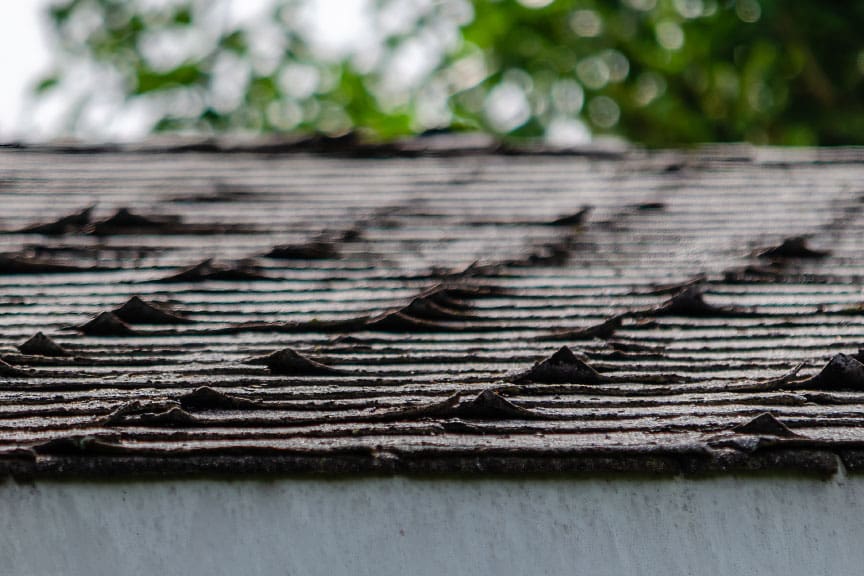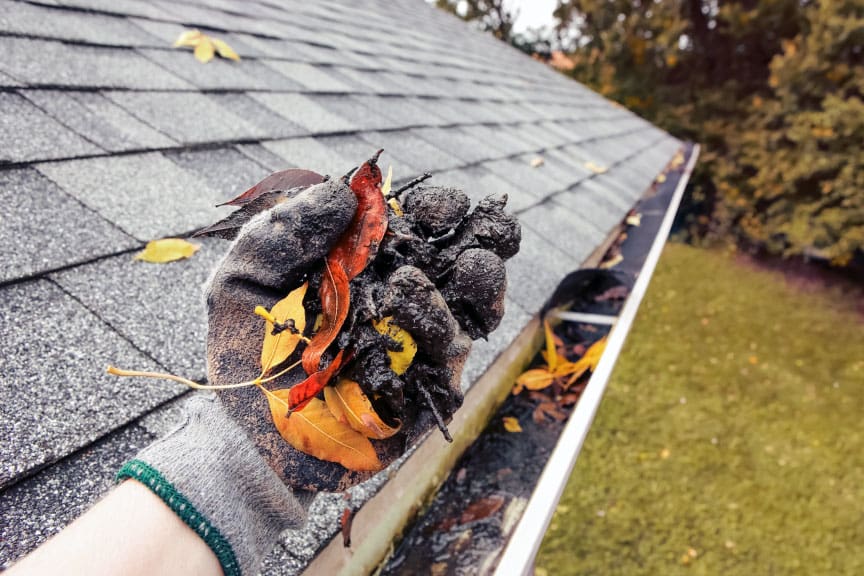If you’re a new homeowner, you might think you need to get on your roof for a thorough inspection. But in fact, most signs of damage can be seen from the ground.
We cannot stress this enough: please, for your own safety, do NOT walk on your roof. There’s a good reason why any roofing contractor in Virginia Beach worth their salt mandates safety harnesses, hard hats, and non-slip shoes. Because people can, and have, gotten hurt before.
Luckily, you don’t have to risk your safety just to inspect your roof.
Inspect your Roof from the Ground.
First, use binoculars if you have them. Then, walk around your home, viewing all sides of your roof. If you live in a neighborhood with tall houses close together, like townhouses, try stepping back a distance for a better view.

Here’s what you should be looking for:
- Cracked, curled, or missing shingles
- Shingles with mismatched colors
- Sliding or loose shingles (shingles not in a neat row)
- Moss or algae growth
- Sagging sections
- Visible debris, such as an accumulation of branches.
Roof penetrations are often vulnerable sites. Vents, whirlybirds, skylights, and chimneys break through your roof, creating opportunities for leaks. Can you spot any:
- Gaps between the penetration and the roofline
- Cracked caulk
- Damaged flashing
If so, then you might need a minor roof repair from a Virginia Beach Roofer.
Unique Things to look out for in our Coastal Climate.
As an experienced roofing company in Virginia Beach, we know all about our coastal conditions. Firstly, the salty air and high humidity can accelerate corrosion. So, look out for rust on metal components. These conditions can also promote the growth of moss and algae. For more information on treating such growths, read our article: Coastal Roofing Tips to Help Protect Your Virginia Beach Home.
Coastal Virginia is known for its strong winds and frequent storms. Debris, such as leaves and branches, can accumulate, especially in roof valleys. Not only is this an eyesore, but it’s enticing to pesky critters who want to make a home in your roof.

The Importance of Gutter Maintenance.
Storytime: My grandmother couldn’t maintain her gutters because of her age. So, when I visited her, I took care of them. And oh my goodness, were they the absolute worst gutters I’ve ever seen.
Leaves and organic matter had accumulated and decomposed for so long that they became soil. Plants grew out of the gutters along with mold.
Moral of the story: your gutters are just as important to your home’s overall health as your roof. So don’t neglect them. We recommend checking your gutters at least twice a year, once in the spring and again in the fall.
From the ground, look for any sagging gutters. This could hint at accumulated debris or failing hardware.
However, you will likely need to climb a ladder to inspect and clean your gutters. Ensure your ladder is square, with all feet firmly and squarely on the ground, so it doesn’t wobble. If it is an extension ladder, ensure the extension is securely in place. If you have an extra person, have them “foot” the ladder, hold it steady.
While you’re up there, see if there’s any granules accumulating in the gutters. Granule loss is a sign of an aging roof. If you can’t inspect your gutters or don’t feel comfortable doing so, you can always call in professional inspectors.
Finally, for a Full View and Understanding of your Roof, check inside your Attic.
Again, be safe when inside your attic. Bring a flashlight and watch your step. Wear a mask if you believe mold is present.
Look out for:
- Water stains
- Wet insulation
- Condensation
- Musty odors
- Torn underlayment
- Mold
- Pests like termites.
Just to cover all your bases, scan your attic for daylight. Turn off all your lights so your attic is pitch black. If you see any pinprick of sunlight, that means water can get in. Read our blog, How to Find and Fix Roof Leaks in 3 Easy Steps, for more information.
When to Get a Professional Roof Inspection
We recommend having your roof professionally inspected at least twice a year. The best times to do so are spring and fall, after winter weather has passed and before hurricane season begins. That’s why we offer free, no-obligation roof inspections.
